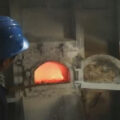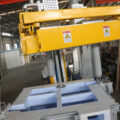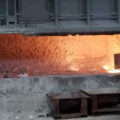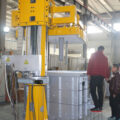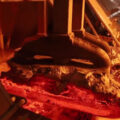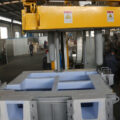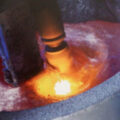Aluminium Degassing Process: In addition to hydrogen, it is necessary to prevent moisture and various dirt from entering the crucible or furnace, but also to eliminate oxide inclusions and hydrogen in the aluminum liquid. Because only by effectively removing the dispersed inclusions suspended in the molten aluminum, can the molten aluminum be prevented from increasing hydrogen and eliminating the obstacles to hydrogen removal, so as to obtain pure molten aluminum and cast qualified castings. The hydrogen in the molten aluminum is partly or completely dissolved in the alloy structure during solidification, so that no pores are formed in the casting.
Surface pores and bubbles can be found by sandblasting, and internal pores and bubbles can be found by K-ray perspective or mechanical processing. The pores and bubbles appear black on the X-ray film.
Reducing the gas content in the aluminum water and preventing a large amount of gas from forming pores on the precipitation surface of the aluminum alloy when the aluminum alloy is solidified. This is the purpose of Aluminium Degassing Process in the aluminum alloy melting. If the content of the gas is reduced in the molten aluminum, the amount of gas precipitated during solidification will be reduced, and thus the number of bubbles generated will be reduced and significantly reduced. Therefore, the refining of aluminum alloy is a very important technique. If the refining quality is good, there must be fewer pores, and if the refining quality is poor, there must be more pores.
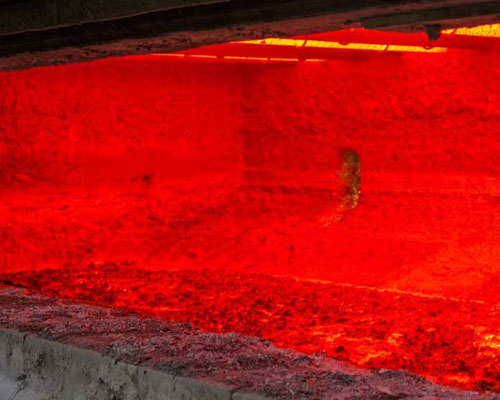
The measure to ensure the quality of Aluminium Degassing Process is to first use a good refining agent. A good refining agent can react to produce bubbles at around 660°C. The bubbles produced are not too violent, but produce bubbles uniformly. Through physical adsorption, these bubbles are in full contact with the aluminum liquid. The longer the better, the bubbling time is generally 6-8 minutes. When the aluminum alloy is cooled to 300°C, the solubility of hydrogen in the aluminum alloy decreases, and at this time it is only 1/700 of the liquid state. The pores generated by the precipitation of hydrogen after solidification are scattered fine pinholes. This does not affect the gas and the processed surface, which is basically invisible to the naked eye. When the molten aluminum is solidified, the bubbles produced by the precipitation of hydrogen are relatively large, mostly in the center of the final solidification of the molten aluminum. Although they are also dispersed, these bubbles often cause leakage and often lead to the scrapping of the workpiece.
When smelting aluminum alloys, we must strive to achieve rapid smelting and shorten the residence time at high temperatures. The filling speed of molten aluminum die-casting is too fast, so that the gas in the cavity cannot be completely and smoothly extruded into the cavity in time, and the liquid flow of the molten aluminum is involved in the molten aluminum. Due to the rapid cooling of the aluminum alloy surface, it is encased in the solidified aluminum alloy shell and cannot be discharged, forming large pores.

